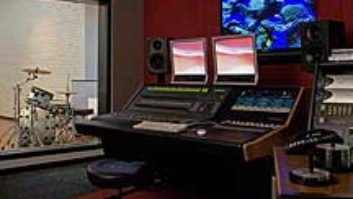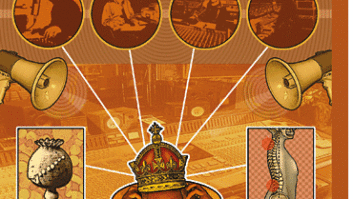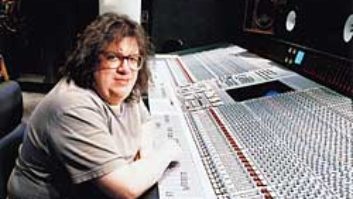If you recall the classic popular vocal recordings that have enduredover the decades, the primary element that has helped get the magicacross was not a cleverly gated, million-dollar drum sound, but rathera vocal performance that communicated something essential and touchedcountless listeners. A top-notch vocal performance often containsqualities that transcend mere technique, and the best engineers andproducers are those who are able to capture those sometimes fleetingmoments when vocal genius is realized.
To talk about recording vocals, Mix enlisted fourengineer/producers whose credits run the gamut from Gloria Estefan,Iggy Pop and the Rolling Stones to Metallica, Willie Nelson and JohnMichael Montgomery. We also invited a highly regarded vocal coach andproducer to offer extra input.
While this applications piece addresses microphone, mic preamp andoutboard gear technique, each of these contributors underscored theimportance of providing the right emotional support to the singer orsingers. After all, great mic technique can’t salvage a badrecording climate, while some of the most powerfully immediate vocalperformances have been caught in the most primitive of recordingsituations, where everyone felt in sync with the truth of themoment.
ED CHERNEY
Ed Cherney is one of the recording world’s most highlyregarded figures. Cherney’s engineering, mixing and/or producingcredits include Jann Arden, Bonnie Raitt, the Rolling Stones, LittleFeat, Iggy Pop and Ritchie Sambora, among many, many others.
To me, a vocal is the hardest thing to record. It’s harderthan a hundred-piece orchestra or a three-piece rock ’n’roll band. That’s probably because it is a very literalinstrument. Typically, on a recording, a voice sounds like what a voicesounds like, unless you are filtering it or doing other things to it tomake it fit into the music. It is also the most dynamic instrumentthere is. It goes from being really soft to being really loud, and youneed a microphone that can deal with that.
After about a dozen records, the Audio-Technica 4050 is the firstmic I put up for most singers. I used it on Jann Arden and RitchieSambora, as well as a lot of the Rolling Stones record I just did. TheAudio-Technica is smooth, very clear and open-sounding, and it has alot of headroom. It is also a very consistent-sounding mic.
That said, mic selection changes for every vocalist and situation,and sometimes I may get stuck with a microphone, not necessarilybecause of the way it sounds, but as a result of the way the music istracked. I might have an artist who may like to be out in the roomsinging live vocals with the musicians playing for whatever spark ofenergy they can get out there and the groove. In that kind ofsituation, I have to consider the mic’s rear rejectioncapabilities and how tight the mic is when you put the singer into theroom. I also may not be familiar with the singer’s voice, andI’ll put up a microphone and get a really great take where 75percent of that vocal performance may be a keeper. I’ll then haveto go back and match it up, punching in the lines that I need. As aresult, I’m stuck using that microphone and that particular setupto get the vocal to match. Then later, in mixing, I’ll try to getit sounding the way it probably should.
I rarely use mic pre’s that are on the newer consoles. I havea rack of old Neve 1073s I carry around with me. I really love the waythe old mic pre’s sound. They have plenty of headroom, and theyare typically really rich and open at the same time.
To get singers to sing great is mostly psychological. A greatperformance will always transcend a less than great sound on a vocal. Ithink that everything that you do has to be designed around making thesinger feel comfortable, and for me that means getting it quick. Thefirst time that singer is sitting in front of a microphone, I hit“record” and get everything they do. Part of it, too, isletting them sing and staying off of the talkback. I let them sing thesong five, six or seven times. That may entail building a slave reel,so you have plenty of tracks to comp and do your vocals.
It’s all about creating that environment, making sure that thetemperature is nice in the studio. If the lights are right, theheadphone balance is perfect and the singer feels that you’reworking with them, then they sing better. I also always try to have thesinger’s principal instrument in their hand when they aresinging.
Also as a producer, you have to understand that it may not be agreat day for the singer, and you go on to something else. Of course,you try to plan out the session, like you are going to have vocalsrecorded on this day, but “vocal” day is like putting allof your eggs in one basket. It is the added pressure of, “Well, Ihave to do it now. It’s now or never.” I never want tocreate that situation. You should have the option of singing a songanytime you want. If you feel it now, well the mic is open so go getit. I even do that when we’re mixing a song. If I feel there ismaybe a phrase or a line or verse or something that can be phrasedbetter and you are looking for that thing, I just want to be sure thateveryone is free enough to go do it, when the moment happens. I want tomake sure that I have tape on the machine, and I have the tools readyto go in and get it. I want to be there to document these greatmoments, because you never know when they are going to come.
RENE GRANT-WILLIAMS
Since the mid-’70s, Nashville-based vocal coach and producerRene Grant-Williams has helped numerous singers develop artisticallythrough her teaching methodology. Her clients over the years haveincluded Huey Lewis, Bob Weir (of the Grateful Dead), Linda Ronstadt,Charlie Daniels, Tim McGraw, Lyle Lovett, Jill Sobule, Kim Wilson (ofthe Fabulous Thunderbirds), The Subdudes, Sonny Landreth and DougStone.
One of the things that is important to keep in mind is that thesinger is a living organism, and the quality of the vocal will dependon how healthy and resilient and well-prepared that organism is. One ofthe things to take into consideration is scheduling. Sometimes thesinger will wear out the voice singing rough vocals with the tracks twoor three days in a row, and then the next day final vocals may bescheduled and there is nothing left. It’s important to rememberthat, while the voice is a very resilient thing, it can get too thinand lose its elasticity.
It is important to give the singer time to re-warm up andre-establish their technique and be aware that it’s like a runnerrunning short sprints. It’s very important that the runnerlimbers up and not just run hard and then get cold and then run hardagain. You always have to take waiting around time intoconsideration.
I very highly favor a microphone position that is fairly low. Thereis a tendency for some engineers to hang a microphone high, but if youhave to stretch your head up or hold your chin up, it puts tremendousstrain on the voice. The best position is right at lips level orslightly below, so you can kind of contract into your body support withyour head tilted slightly forward. Think about the classic Elvisposition—the way he cocked his head over the microphone that kindof looked up from underneath. That allowed all of that sound toresonate up in his head, instead of putting a strain on his neck andshoulders. Support, which is the way the body powers the sound, is veryimportant.
Perfectly normal people, who wouldn’t be caught dead runningaround town with their hands behind their backs, will do that whenthere is a microphone in front of them. Suddenly, it’s like,“What am I going to be doing with these things at the end of myshoulders? Let’s stick them behind the back.” Well, thatrobs you of a lot of support.
The body language from people in the control room is very important.A lot of times, people don’t realize that while they are having alaugh about something totally innocuous in the control room, someone issinging out on the floor who can’t hear what is going on, canbecome sensitive and can misconstrue things. Many singers, on somelevel, imagine that it must be about them. It is important to create anatmosphere that is helpful to the singer.
People tend to creep up on the mic as time goes by. That’s whyyou need to put some kind of tape marker on the floor.
Give the singer a choice of headphones to listen through, so theycan find what helps them the most. If the vocal is too high in aheadphone mix, the vocal will tend to go flat. If the vocal is too lowin the headphone mix, then the singer will often tend to push thingsand go sharp.
I have a problem when I hear people telling a singer to“relax.” It’s the one statement that I find makes asinger uptight. It can be terribly intimidating to hear—nobodywants to think that they are not relaxed. (There was a studio in Canadathat had a sign that stated: “Try to relax or we will findsomeone who can”!)
Often, singers have trouble figuring out what they did well during avocal performance while they are out on the floor singing with theirheadphones on. I think it’s important for a production team to bespecific. I’ve been in sessions where the production team ismaking a singer do something over and over again and only offeringstatements like, “That’s not getting it. Let’s do itagain.” If the singer doesn’t specifically know what aspectof the performance needs addressing, it can be very frustrating. Again,encouragement has more to do with getting a good performance thananything.
ERIC PAUL
Eric Paul has made a career out of recording country giants likeWillie Nelson, Waylon Jennings, Johnny Cash and many others, includingnumerous modern country radio artists. Though Paul loves working withgreat vintage gear, he is quick to point out gear that offers qualitywhile being affordable for most studios.
We are taught to be purists in one sense when recording voices, butthe right compression while recording is great. Compressors work betteroff of live signals than off of tape, because a reproduced signal isnever as strong and pure, and it doesn’t have the same kind oftransients as when it is coming off of a live microphone preamp.I’m very careful not to overcompress. I never use more than acouple of dB of compression when I’m recording a vocal.
If I’m in a studio where I don’t have access to a goodLA-2A, my favorite low-end compressor is the Composer by Behringer. Themass public has access to those, and they are in a lot of demo studiosacross the country. The reason that I like it is that it’stransparent—it will hold back the vocals from getting out ofcontrol, but you can’t “hear” it. (While I prefer theLA-2As, it depends upon the tubes. My favorite tubes are the old GEtubes, if you can find them. You take any piece of tubegear—compressors, microphones—and you put a good old GEtube in there, and it will sound so much better than anything else.I’ve done many comparisons.)
I have a Sony C-37A that is the sweetest vocal microphone on afemale voice that you have ever heard. Daniel Lanois used my C-37A onEmmylou Harris for the Wrecking Ball album. (Again, the trick to thewhole deal is old GE tubes.) For male voices, I generally like the U47,but my favorite overall microphone for voices is the Shure SM-5D.
For mic pre’s, the API 312 is my favorite, bar none. Peaveymakes a dual tube microphone preamp that sounds great. The Peavey tubepreamp and the Behringer Composer make an affordable combination formost people that is great. If they can’t get a Shure SM-5, theycan get Shure SM-7s, which are still available.
With analog tape, you have to be really careful not to hit the tapetoo hard with the vocal, because it can really do terrible things toit. In the same manner, it’s important not to get too low of alevel. I usually like to have my vocal peaking out at zero on a VUmeter. It depends on what tape you are using and how you have it set,but I am in this case referring to 499 set at +5 over 250; it’swhat most everyone uses now on 499 and the new BASF 900, which Ipersonally like better because it’s quieter and has more energyto it.
CSABA PETOCZ
Csaba Petocz is one of Nashville’s hottest producer/engineers;he produced John Michael Montgomery’s most recent,Platinum-selling project, which generated three Number One countryhits. Petocz’s credits are also wide-ranging, including artistslike Stevie Nicks, Metallica and Concrete Blonde.
I don’t think there is any such thing as the perfect vocalmic. It’s just different mics for different people. You shouldjust understand what each different mic sounds like and how it changesthe sound of the human voice, and then obviously select the mic thatenhances the sound of the voice.
You should go out on the floor and hear the person sing, hear whatit is that they do and what part of their voice is really special.Obviously, if the person is worth recording, there is a uniquenessthere, and you should really try to highlight that aspect of the vocal.Over the years, I have gotten to where I can hear a singer and knowwithin one or two mics which should work.
If you’ve tried out three very expensive tube mics and youaren’t happy with any of them, then the next step shouldimmediately be something at the other end of the scale, like a [Shure]SM-7. I will almost always guarantee you that if the expensive micdoesn’t work, an SM-7 will. You have to screw with EQ a littlebit, but for some reason some people sound better on them.
I think that 80 percent of getting a good vocal is in giving thesinger a good headphone mix. If you can make a singer enjoy singing andreally hear what is going on with the small nuances in the voice bygiving them a great headphone mix, you can get the artist to do 90percent of your work. This is especially true if you can get them to beattuned to what it is that you would really like to hear. Most singersget challenged by it. Artists really get into the fact that you careenough to make it that two percent better.
More than anything that you record, the human voice is the thingthat reacts most to small changes. You can really make a vocal soundsignificantly better by changing variables minutely. Having been incountry music for about five years, I’ve learned that you cantake a lot of liberties, but taking liberties with the vocalisn’t one of them. Country is not the genre to do that in. Itjust doesn’t work. The most hi-fi aspect of country has to be thevocals.
I went through so many years of doing “alternative” rockrecords that it is kind of nice to record something really well. I knowit may be un-hip to say that, but I get off on the purity of it. Also,without any disrespect to any of the other musical forms, I thinkcountry and R&B have some of the most accomplished singers, and itis a lot more fun recording with someone who is a great singer.
Most recordings get it 95 percent of the way there. The challenge isto get that last extra percentage, and that is what separates greatvocal sounds from everyone else’s. It’s more than justputting up an $8,000 microphone into a $2,000 preamp. That 95 percentis just meat-and-potatoes good recording, but the last five percent isabout how to relate to this human being who is incredibly vulnerable infront of you singing and who trusts you enough to go in there and workhard enough to get that last five percent of the vocal that makes themsound just that much different than every other artist that is outthere.
ERIC SCHILLING
Miami-based engineer/producer Eric Schilling has worked withPlatinum-selling recording artist Gloria Estefan throughout her longcareer. He has also recorded Jon Secada, Cachao and others.
When you work with someone who is singing, it tends to be aone-on-one process. The whole key to me is to keep a rhythm so thesinger never loses the flow. If you are working and they say,“Let’s go back to the verse and do lines two andthree,” you want to be fast enough so that it happens in aseamless way. The moment you start going, “Oh no, I’ve gotto figure out where I am, and I’ve got to fix some EQs,”they start drifting. Recording voices is one of the most fun things forme to do, and I love it when that “flow” is going.
When you’re working with someone who has a really“pure” voice, it can be harder for them when it comes tothe issue of pitch, because there are fewer harmonics in their voice.You easily hear it when things fall from pitch. Just to cite a crudeexample, Karen Carpenter had to be really in tune, because she had avery pure voice, but you take a Bob Dylan, who has a kind of gruffvoice, and he can move the pitch around a whole lot, because his voicehas a very wide spread of overtones. It’s funny how you can findan album of someone like Dylan, who has that kind of voice, and thoughyou hear some pitch problems, you don’t really mind it. On theother hand, if the voice is really pure, it can be very grating if itisn’t really in tune.
Concerning pitch correction tools, I think they have a use, but itis my preference that it gets used as the last thing that you do, andnot the first thing that you do. I still like to see a person who isgoing to come in and work on the voice and not sing it through twiceand say, “Well, you can fix it.” I don’t believe inthat. I’ll use it to fix some minor things on a vocal performancethat may have a great overall vibe, where the singer feels that he orshe can’t top that level of performance again. Utilizing pitchcorrection at that point is probably fine. It is funny, but sometimeswhen you pull it too far in tune, it doesn’t feel right and ittakes away the character of the performance.
I don’t believe that music is meant to be a perfect thing.When you sing, you don’t always sing exactly on the beat, orexactly in pitch all the time, just like if you were playing a fretlessbass or anything else where you have some room to move. You have to becareful when you tamper with the recorded performance.
Generally, I am a big fan of the John Hardy mic pre’s, which Ithink are real neutral-sounding. I also like the Millennia and API. Myfirst choice of compressor is a good LA-2A, if I can get my hands onone. Another compressor I really like a lot, which you don’t findthat much anymore, is a Compex. It is a British-made compressor thatused to be called a Vocal Stressor. I always cut flat, mainly becauseif they are going to come back and change a part or we recorded a monthearlier and they want to re-cut some lines, I find that it isn’tas hard to match the sound if I cut it flat.
With many older mics, you have to be very careful about the roomyou’re in, because if you’re in too small of a booth,you’ll actually start to hear the sound of that booth, especiallyin the lower frequencies. They essentially behave like omnis in thelower range. So if I have somebody who is working on a tube mic andthey are in a small room, I’m going to have them about one handwidth (or five inches) away from the mic. I generally use a pop screeninstead of a windscreen to keep the spit off of the microphone, and itkeeps people from getting too close. I can always tell when theycan’t hear enough in the ’phones, because they start topush the pop screen in closer to the mic.
Concerning singing with large groups, I guess I came from the schoolof putting up one microphone. When I came down to Florida, my old bosswas doing The Eagles records. He would put up an omni, and they wouldstand around it and work until they got the balance.
I am not a huge fan of flying vocals in and that kind of stuff, butsome people I’ve worked with will say, “Great, I’llsing it once and you can fly it all in.” Nevertheless, if I canget them to sing the whole song through, that is my preference. I likedoing it this way because the emotion changes. I just think there is akind of stride that you hit as a background singer that is also playinginto the song from an emotional point of view. If you listen to abackground track that is sung the whole way next to a sampled trackwith the vocals flown in, the sampled track will sound static. As aresult, the music will tend to feel more static, too. I see why peoplefly vocals in, but there is an emotional side to this that they aremissing.






